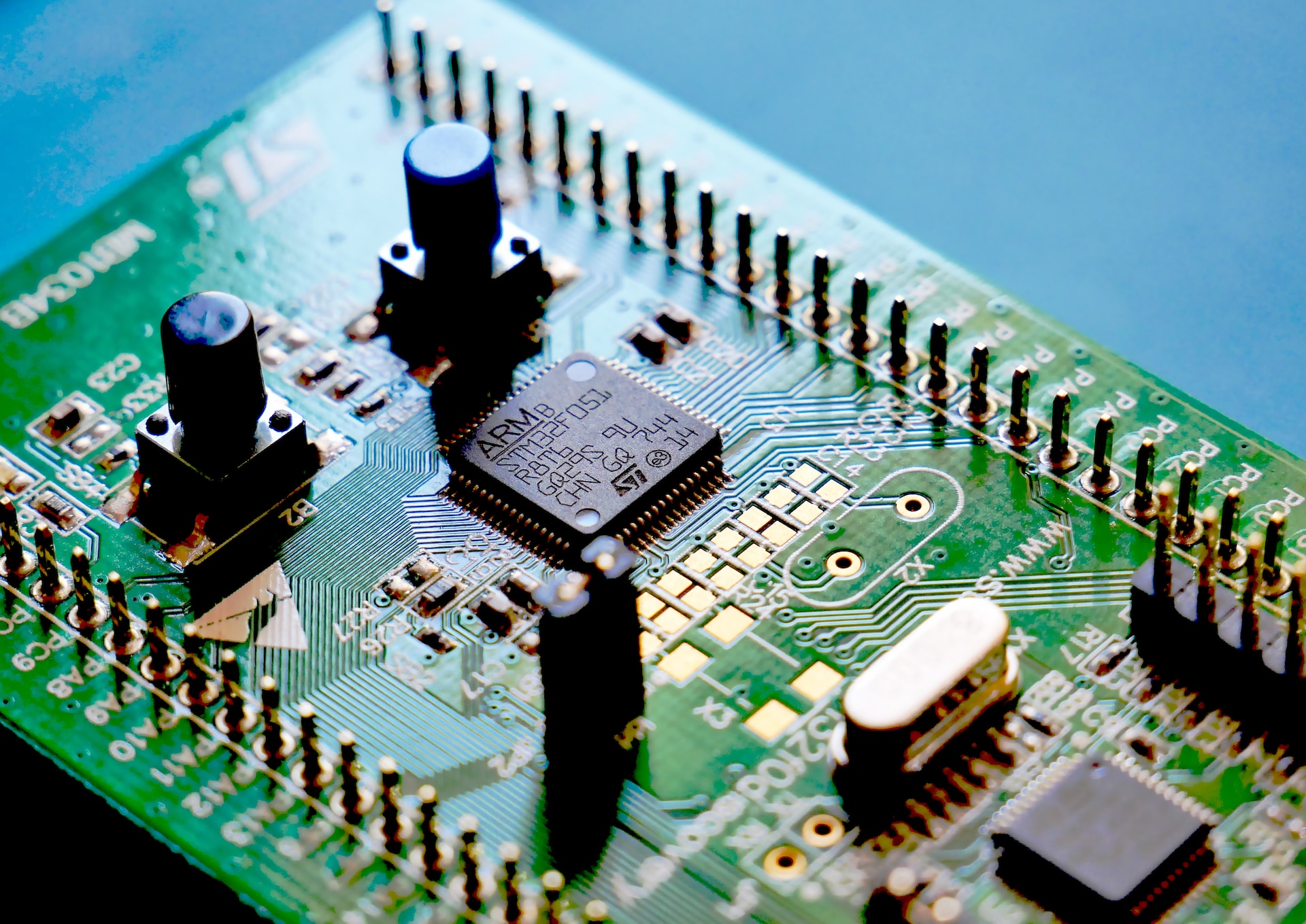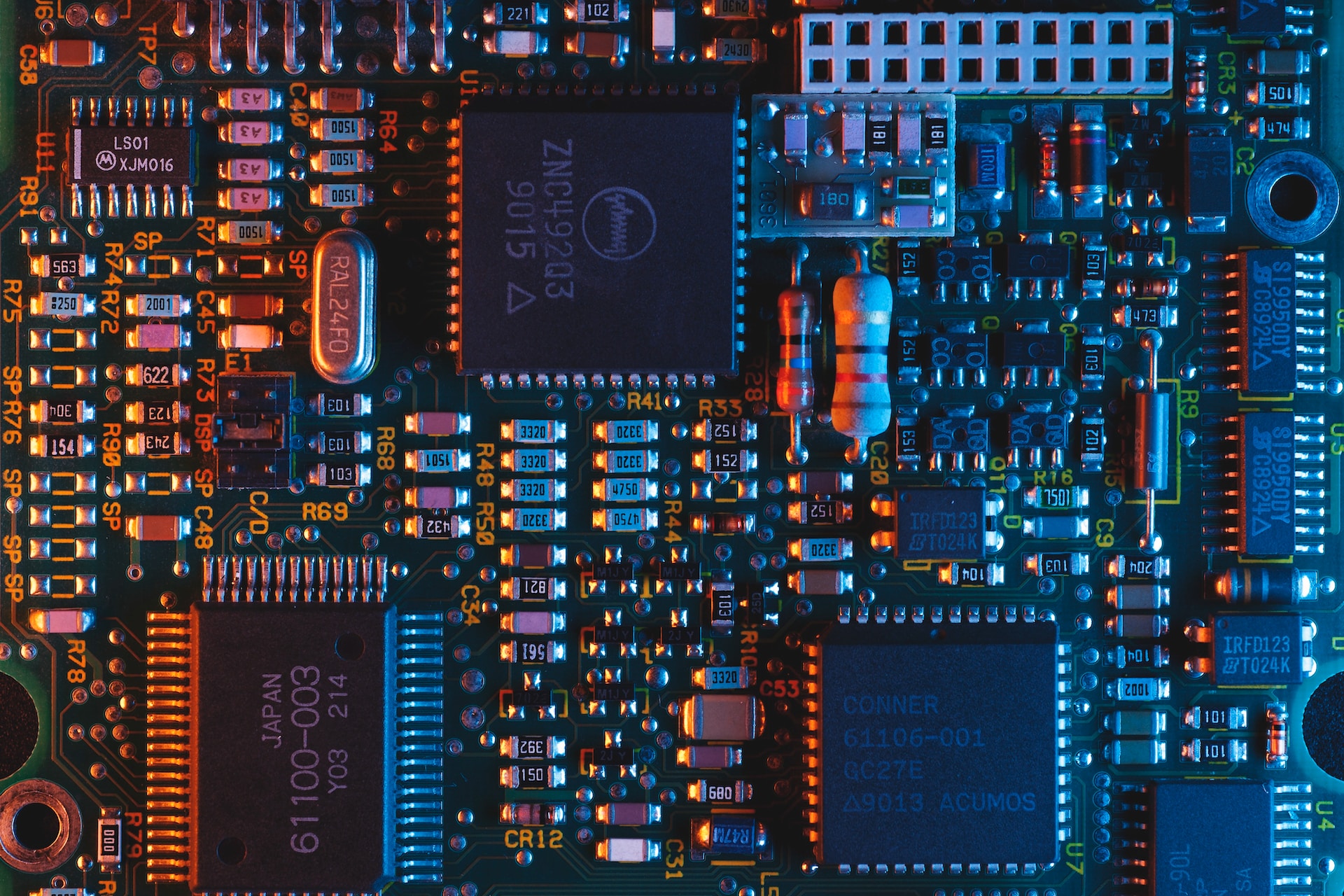It’s clear that any answer to the question of “What is an embedded system?” must reflect on the significant, positive impact these technologies have had on the advanced engineering environment. The global embedded systems market was worth an estimated $140bn in 2022 alone, with compound annual growth estimated at 6% for each year between now and 2032.
In short, embedded systems are leading a revolution in the industrial space, finding use in all settings, from manufacturing to energy and broader automated production environments such as the automotive engineering and telecommunications sector.
In this guide, we’ll answer the question “What is an embedded system?” by looking closely at how they work before exploring some examples of embedded systems that engineers will encounter daily.
What Is an Embedded System, and How Do They Work?
So, what is an embedded system? The short answer is that they’re programmable operating systems that connect to a broad range of devices to control manufacturing line speeds, adjust temperatures, and automate processes, freeing up technicians and engineers to focus on more productive tasks.
However, that short definition isn’t likely to offer much more clarity unless you’re already an embedded systems engineer. Instead, we’ll look closely at the key components that make embedded systems indispensable within the manufacturing, industrial automation, and advanced engineering environments, covering how they can interact with their surroundings to enhance productivity, profitability and efficiency in real-time.
Key Components of Embedded Systems
Examples of embedded systems abound within the manufacturing and engineering environment and can generally be split into two central automation categories, namely, machine monitoring and machine control.
Machine monitoring utilises embedded systems to ensure that long-term performance is efficient and working to business leaders' and engineering teams' expectations.
For instance, the aforementioned temperature and line speed monitoring will be done in real-time, with minute adjustments made to ensure high quality and fast throughput. This can help technicians identify issues and manage risks to personnel and productivity quickly, enabling proactive maintenance of revenue-critical infrastructure.
Machine control, on the other hand, focuses on the instructions that embedded systems receive on producing a product or component. Through minimising the need for human intervention, organisations can utilise machine control to automate processes and guarantee safety whilst at the same time benefitting from the quality improvements that can be realised through advanced robotics and networking.
So, now that we’ve answered that part of the question of “What is an embedded system?”, we can look in more detail about the key components of these innovative solutions, highlighting what each aspect is responsible for.
1. Microcontrollers
Microcontrollers are, in essence, small personal computers contained within a single chip—highly preferred by the embedded systems engineer due to the ease at which they’re utilised to perform a specific task or set of instructions.
Incorporating a central processing unit (CPU), RAM and ROM memory, and in/out interfaces in a compact footprint, these components are the beating heart of an embedded system. They provide the processing power required to control the wider behaviour of other devices, robotic equipment, and temperature management tools along the manufacturing line.
Alongside offering something of an all-in-one solution, microcontrollers are also an example of the advantages of embedded systems in and of themselves. They offer engineers, technicians, and business leaders a high degree of flexibility due to the ease of reprogramming them to perform different tasks.
2. Sensors
Used to collect and report on real-time data from the environment in which the embedded system is located, sensors give these innovative technologies their ability to respond on the fly to minute changes, ensuring that production processes continue to be highly efficient and that the risk of waste or low quality is minimised.
These sensors can be used by an embedded systems engineer to quickly understand and modify a range of environmental factors, including:
Temperature
Humidity
Pressure
Motion
Visual obstructions
Indeed, the growing use of digital vision within the engineering industry means that our answers to the question of “What is an embedded system?” are likely to be subject to change—with devices able to provide appropriate responses to visual data with little to no intervention from a human operator.
Objection detection of this nature is crucial within the manufacturing environment, where obstructions on the production line can not only cause costly delays but also lead to high-risk situations where workers’ well-being is put in danger.
3. Actuators
Actuators are responsible for carrying out physical actions, which are overseen by the embedded system’s programming. Connected to the system via its output interfaces, there are a range of actuators drawn upon in advanced engineering environments, including:
Motors
Servos
Solenoids
Relays
Valves
In short, actuators convert the electrical signals the embedded system sends out into mechanical movement or some form of physical activity, generating motion, heat, or force, as well as controlling the movement of hydraulic fluid or generating pneumatic pressure. As a result, actuators could be said to be responsible for much of the functional “work” that we associate with embedded systems as a whole.
4. Memory
The memory embedded systems use to store and retrieve information is split into two areas—read-only memory (ROM) and random-access memory (RAM).
ROM memory and flash alternatives are utilised to store system-critical code or firmware, which—perhaps unsurprisingly, given its name—will not require modification. Storing data in a persistent manner through shutdowns and restarts, ROM often houses the computer’s basic input/output system (BIOS) and the information that devices connected to the embedded system must access to function correctly.
RAM, on the other hand, is considered “volatile” memory—requiring power to avoid data loss. RAM modules typically store the information and variables which are used during the execution of programs stored in the ROM since these variables can be altered to suit production needs, with the data able to be accessed and modified flexibly.
5. Input/Output (I/O) Interfaces
With a range of input and output (I/O) interfaces, embedded systems can interact easily with the outside world via digital and analogue means.
Everything we’ve covered so far, from memory and sensors to actuators, must be able to communicate with each other and the embedded system’s CPU. As a result, various I/O connectors have been developed to enable this, including the serial peripheral interface (SPI), Inter-integrated circuits (I2C), and universal asynchronous receiver/transmitters (UART). Without I/O, all of an embedded system's components would fail to work together.
Alongside this, as the digitalisation of the broader industry and the development of the Industrial Internet of Things (IIoT) continues, embedded systems engineers are increasingly able to leverage networking solutions to communicate with—and encourage communication between—the different devices that power production lines, with ethernet and WiFi capabilities increasingly finding their way into the advanced engineering environment.
So, now we understand more about the different components comprising the average embedded system within the advanced engineering environment. Despite this, we’ve not yet fully answered the question of “What is an embedded system?” since we’re forgetting the flip side of the hardware coin: the software enabling it to carry out the required tasks.
Programming and Development
A robust development process is crucial within the embedded systems environment, with coding, debugging, and testing all playing a role in ensuring the production of high-quality goods and components, the continued safety of the embedded systems engineer and technician employed to implement and maintain these solutions, and the ability to quickly pivot to alternative production methods if the need should arise.
Let’s look closer at the common programming languages used for embedded systems and why they’re so important.
Common Programming Languages Used for Embedded Systems
Whilst there is a broad range of languages used within embedded systems, we’ll explore three that embedded systems engineers commonly work on:
C. The most widely used language for embedded systems programming, C is a “low-level” coding language that was designed to be as light on resources as possible, making it a great choice for software development for microcontrollers. C programmers write code which is close to the “bare metal”; that is, it requires an understanding of how the hardware will interact with the software—essential for embedded systems programming.
C++. An object-oriented extension of C, C++ is a fast and efficient language able to handle the most complex of tasks. Embedded C++ is remarkably energy and memory-conscious, with programmers able to utilise as little as 4kB of RAM and a microcontroller processor, whilst the paradigms that govern its continued development as a language—such as scalability, re-use, and polymorphism—allow embedded systems engineers to quickly design and iterate on solutions to the challenges they encounter.
Python. A high-level programming language that provides ease of use and an easily understandable syntax, Python might be a relative newcomer—especially compared to the pedigree of languages such as C and C++—but that hasn’t stopped its use in the world of embedded systems. Powerful libraries exist for the language that makes data analysis and machine learning easily accessible, with a growing community of supporters ensuring that the language continues to rise in popularity. Considered the second most popular language in the world, it continues to go from strength to strength.
The Importance of Resource Optimisation in Embedded Systems
The choice of programming language within many examples of embedded systems is often dictated by the limited resources available to the developer and embedded systems engineer when creating software for microcontrollers.
In comparison to the memory, processing power, and energy usage of the typical personal computer, an embedded system will often have less computing power and memory, meaning it is vital that resource optimisation is taken into account when choosing the language that code is written in.
Alongside this, embedded systems within the advanced engineering and manufacturing environments will typically have real-time requirements to meet, whether responding quickly to temperature drops or clearing blockages in the line. The CPU needs to be able to rapidly respond to these issues, meaning that larger, more unwieldy languages are typically avoided to minimise the amount of computing resources utilised.
Resource optimisation is that all-important final step in our answer to the question of “What is an embedded system?” ensuring that these innovative, crucial technologies can operate for a low cost and are reliable, minimising the likelihood of crashes and errors that can impact the generation of revenue or safety of those staffing other areas of the production line.

Examples of Embedded Systems
Embedded systems are necessary for optimising efficiency, reducing errors, and improving safety within the production and engineering industry, with the automation they provide crucial to continued productivity and competitiveness within an increasingly dynamic and fast-paced market.
Now that we’ve answered the question of “what is an embedded system?” we can turn our attention to some real-world examples of embedded systems that professionals within the advanced engineering, manufacturing, chemical, and industrial environment will regularly encounter.
1. Programmable Logic Controllers (PLCs)
The backbone of industrial and manufacturing automation, programmable logic controllers are examples of embedded systems that are used to drive a wide range of machinery and other production processes. PLCs automate many electro-mechanical processes within the industrial environment, providing everything from temperature control to the movement of robotic arms and conveyors.
Alongside their automation duties, PLCs are also leveraged to collect data for later analysis, providing insights into machine failures, average operating temperatures, and overall productivity. As a result, PLCs will often be utilised alongside SCADA and machine monitoring systems, displaying useful production reports, live trends, and batch status to any embedded systems engineer who wishes to view them.
2. Supervisory Control and Data Acquisition (SCADA) Systems
SCADA allows engineers to monitor and control large-scale industrial processes and facilities, giving professionals within the advanced engineering industry the opportunity to acquire, process, and record information, alongside enabling the control of local machinery through the human-machine interfaces (HMIs) we’ll explore in example four.
The typical SCADA system is composed of a range of PLCs, sensors, devices, and an on-site server or virtual machine, with users interacting with the SCADA system to control processes across an entire site through an operator workstation.
SCADA is especially powerful in situations where the potential for human control is limited, such as in industrial production, water or electricity supply, the oil and gas sector, and wastewater treatment. These systems provide information in real-time, allowing for the safe and reliable running of processes and operations.
3. Distributed Control Systems (DCS)
Ensuring the synchronisation of production machines in the manufacturing environment, distributed control systems (DCS) enable the automation of all or most of the factory environment.
Similar to SCADA insofar as they’re made up of a range of logic controllers, sensors, and interfaces dispersed throughout the manufacturing environment, DCSes often have their own microcontroller and separate CPU, ensuring that if one other area of the system fails, other processes can continue.
Offering a great deal of scalability—since more DCSes can always be added whenever and wherever required—these technologies are utilised within sectors where continuous or batch production is required, such as chemical and petrochemical refineries, paper mills, and power plants.
4. Human-Machine Interfaces (HMIs)
User-friendly interfaces for operators and embedded systems engineers, HMIs allow professionals within the manufacturing and industrial environment to monitor and amend machine operation.
Evolving from simple buttons and indicator lights into touch-screen graphical displays—or even mobile applications—with a dashboard which offers all necessary information at a glance, HMIs are also used to track production times, ensuring that concrete KPIs and other targets are met, enabling a quick response and the potential for real-time monitoring.
HMIs are also crucial to site safety. With around 90% of accidents and errors within the industrial environment caused by human error, HMIs are a valuable means of separating technicians, operators, and engineers from moving machinery, enabling them to diagnose faults in a low-risk manner.
5. Process Control Systems
Process control systems have evolved dramatically over the last century.
Whilst the control of large industrial plants and manufacturing facilities would have been typically controlled from local panels at the site, process control systems mean that these separate panels were all integrated into a permanently staffed control room. Now, they are often able to be controlled from a single access point or mobile device.
These technologies are typically found within the chemical and petrochemical industry, ensuring worker safety and energy efficiency and allowing equipment to run at optimum levels of productivity in even the toughest environments.
Process control takes a range of forms within the industrial and manufacturing environment. From open-loop control, which utilises a set of predetermined instructions to achieve an output, to continuous process control, which can be used to monitor and adjust water temperature during production, these systems ensure that processes are carried out correctly and result in high-quality deliverables.
These examples of embedded systems could, in and of themselves, be considered an answer to the question of “What is an embedded system?”.
They play a crucial role in ensuring quality and safety within advanced engineering and manufacturing environments, allowing for the monitoring and collection of business-critical data alongside the automation of processes that would otherwise require human intervention.
If you’re interested in learning more about the broader sectors that we support, see our recent guide on What Is Advanced Engineering for a closer look at how the industry plays a vital role in the functioning of society and will help us to address the challenges we face over the coming decades.

The Verdict
For those wondering, “what is an embedded system?” it’s evident that these technologies have been at the forefront of the transformation already well underway within the advanced engineering environment. With a rapidly growing global market value, embedded systems are leading the way in revolutionising industries as diverse as manufacturing, energy, automotive engineering, and telecommunications.
Embedded systems encompass several critical components, including microcontrollers, sensors, actuators, memory, and I/O interfaces. These components collaborate seamlessly to enable real-time monitoring, precise control, and process automation, yielding the significant advantages of embedded systems for safety, efficiency, and revenue generation.
Programming languages—such as C, Python, and C++—are essential tools for the embedded systems engineer. These languages are pivotal in optimising resource utilisation, a vital consideration within the constrained manufacturing environment. Resource optimisation ensures that embedded systems operate efficiently, mitigating the risk of crashes and errors that can impact production and safety.
For those seeking examples of embedded systems, our guide has explored several prominent instances from the industrial environment. From well-known PLCs and SCADA systems to DCSes, HMIs, and process control systems, these real-world examples showcase the versatility of embedded systems and their pivotal role across various industries.
In essence, embedded systems represent a vital technological advancement, empowering industries to meet the demands of a dynamic and fast-paced market while at the same time guaranteeing the highest standards of quality and employee safety. The advantages of embedded systems and their continued evolution and integration underscore their immense significance in modern engineering and automation.
Experts in Embedded Systems Recruitment
Amoria Bond’s advanced engineering consultants are committed to connecting market-leading organisations with the talent they need to grow their revenue, address complex challenges, and remain competitive. We’re always on the lookout for the latest engineer trends, which ensures that we can continue to provide recruitment and executive search services that make an impact.
Contact us today or see our job search page to partner with us and achieve your ambitions.






